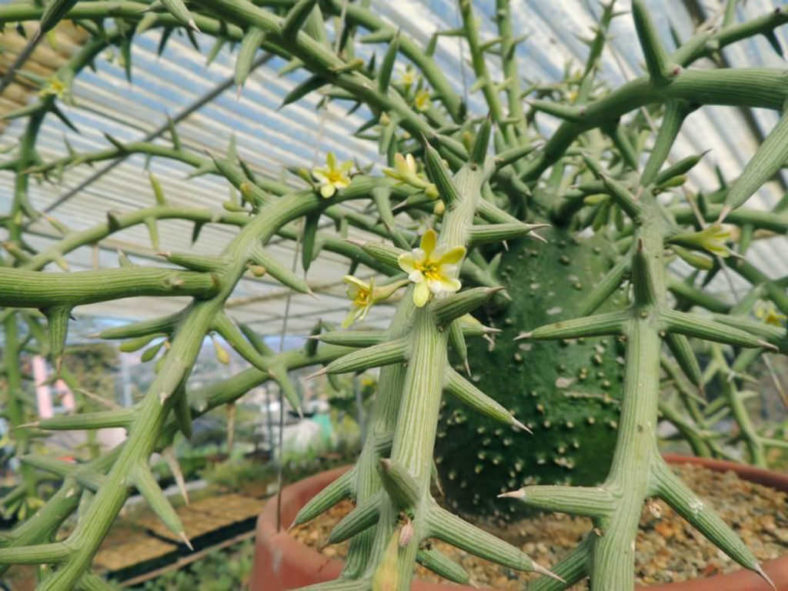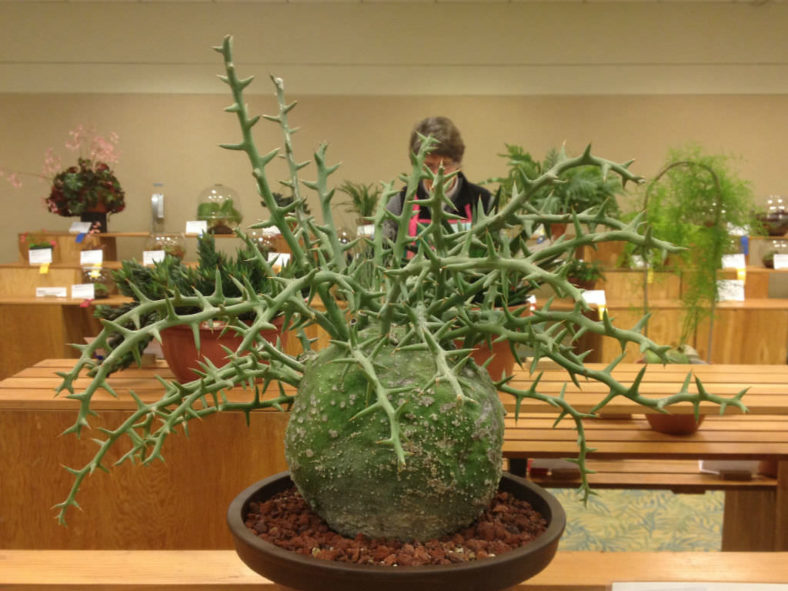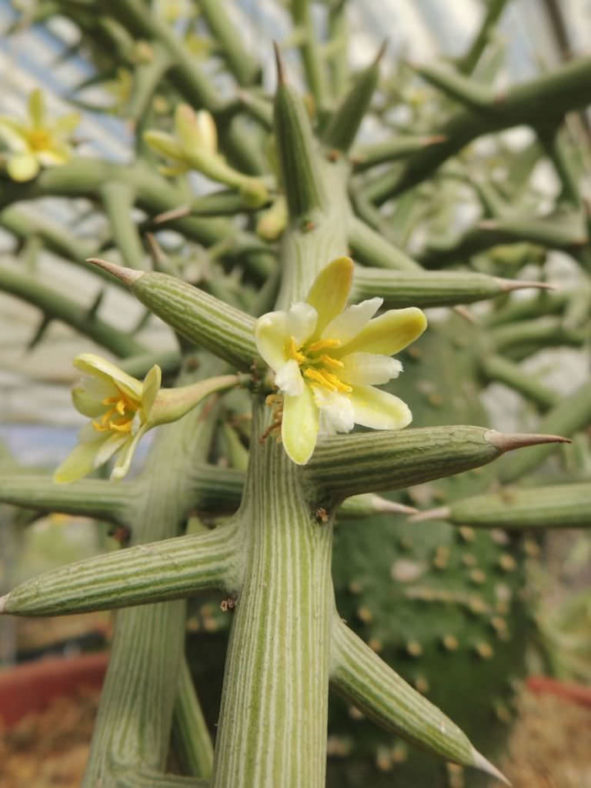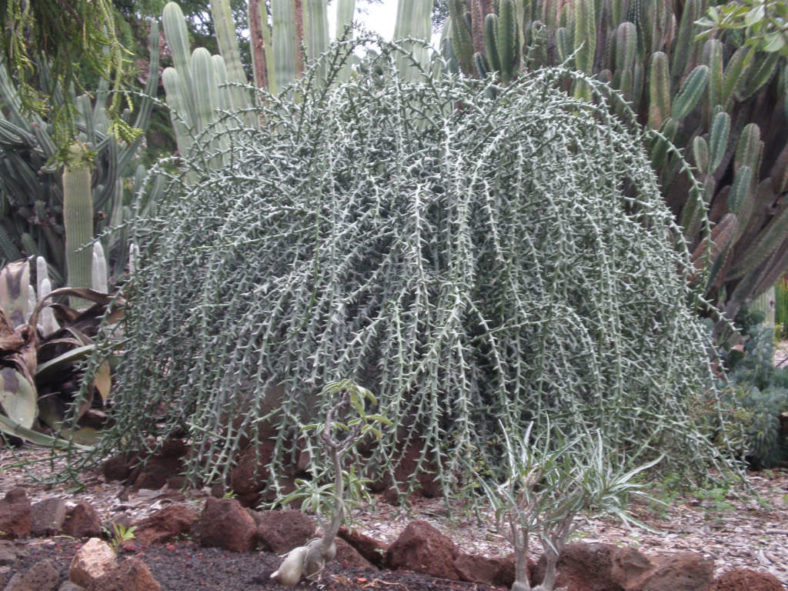Scientific Name
Adenia globosa Engl.
Scientific Classification
Family: Passifloraceae
Subfamily: Passifloroideae
Tribe: Passifloreae
Genus: Adenia
Origin
Adenia globosa is native to tropical Africa. It occurs in Ethiopia, Kenya, Somalia, and Tanzania.
Description
Adenia globosa is a deciduous shrub or a climbing plant with branches growing from a globular, green, warty caudex. The caudex can reach up to 8.2 feet (2.5 m) in diameter, while the branches can grow up to 26.2 feet (8 m) long. The branches can be erect or scramble over the ground, climbing into the surrounding vegetation and attaching themselves using tendrils. They are armed with thorns measuring up to 3.2 inches (8 cm) long. The leaves are alternately arranged and can be triangular or divided into three lobes. They can grow up to 0.3 inches (0.7 cm) long.
The greenish-white flowers, which can be up to 0.6 inches (1.5 cm) long, appear either solitary or in cymes of up to 5 in the leaf axils in spring. This plant is dioecious, with male and female flowers on separate plants.

Hardiness
USDA hardiness zones 10b to 11b: from 35 °F (+1.7 °C) to 50 °F (+10 °C).
How to Grow and Care
Adenias are summer growers and can be regularly watered and feed if planted in fast-draining soil. If you are in a humid climate, let the soil dry between watering.
Most of your growth will be during the warm season, and the plant will have the most leaves. The plant will also grow best with the leaves exposed to bright light but the caudex shaded.
Protect the plant from frost to keep it alive during the cool months. During this period, the plant typically rests, and water should be kept to a minimum. However, you can keep the plant active above 50 °F (10 °C).
Their sap is poisonous and should be handled cautiously, particularly when pruning.
Most cuttings do not produce a caudex, so it is best to propagate by seeds. Adenias are male or female, so one of each is required to produce seeds.
Learn more at How to Grow and Care for Adenia.
Links
- Back to genus Adenia
- Succupedia: Browse succulents by Scientific Name, Common Name, Genus, Family, USDA Hardiness Zone, Origin, or cacti by Genus
Photo Gallery


